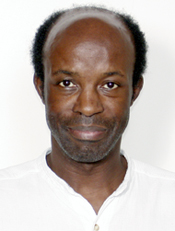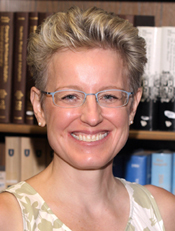Physicists get first look at elusive single top quarks



Scientists at the U.S. Department of Energy's Fermi National Accelerator Laboratory (Fermilab), including six from The Florida State University, have made the first observation of the production of single top quarks, one of the elementary particles of matter. Researchers believe that top quarks provide clues to solving longstanding mysteries of the universe.
The observation of single top quarks resulted from the painstaking analysis of billions of proton-antiproton collisions recorded by the DØ (DZero) detector in Fermilab's Tevatron, the world's highest-energy particle collider. Physics researchers from Florida State who participate in the DØ collaboration are Associate Professor Todd Adams, Professor Susan Blessing, staff physicist Sharon Hagopian, Professor Harrison Prosper, postdoctoral research associate Jedranka Sekaric and Professor Horst Wahl, along with their graduate students.
Previously, top quarks had only been observed when produced by the strong interaction between elementary particles. That process leads to the production of pairs of top quarks. The production of single top quarks, which involves the weak nuclear force, is much harder to identify experimentally. But almost 14 years to the day after the top quark discovery in 1995, the production of single top quarks has now been observed.
"I am simply elated," said Prosper, the Kirby W. Kemper Professor of Physics at Florida State. "Fourteen years ago, the search for single top quarks seemed an almost impossible task. Yet several Ph.D.s later — including two from Florida State — my colleagues and I finally succeeded."
Searching for single-top production is an extremely difficult business because only one in every 20 billion proton-antiproton collisions produces a single top quark. Moreover, the signal of these rare occurrences, called "events," is easily mimicked by other processes, referred to as "background," that occur at much higher rates.
At 200 times the mass of a proton, which is roughly the mass of a gold atom, the top quark is by far the heaviest elementary particle — yet it has no discernable size. Understood as an ingredient of the particle soup created just after the Big Bang, today top quark pairs exist only fleetingly within atoms, according to the laws of quantum theory. Therefore, in order to study the top quark in detail it must be created experimentally in a high-energy particle accelerator, such as the Tevatron, that can recreate the conditions of the very early universe.
"This was a difficult analysis, carried out by a very dedicated and persistent group," said Blessing, a professor of high-energy physics and director of Florida State's Women in Math, Science and Engineering program. "Their search began 15 years ago and required that we understand our detector and the data extremely well. This bodes well for future searches."
To make the single top quark discovery, the researchers spent two years combing through the results of proton-antiproton collisions recorded by the DØ experiment. The DØ collaboration is an international team of nearly 500 scientists studying high-energy particle collisions.
The Fermilab collaborators identified several thousand events that looked the way single top events are expected to appear. Using sophisticated statistical analysis and detailed modeling of background processes, the team showed that a few hundred collision events produced the real thing.
The researchers submitted their results to Physical Review Letters on March 4.
"This discovery, in which Florida State University scientists played a pivotal role, is a spectacular example of the truism that, even in a collaboration of some 500 scientists, individuals can make significant contributions," Prosper said.
High-energy physics is about what makes up the world and what holds it together. Its Standard Model is the most comprehensive theory ever created and explains in detail the interactions between all elementary particles.
Having more precise information about the top quark gives scientists clues in their search for another missing puzzle piece, the Higgs boson, which many physicists believe will solve longstanding mysteries about the universe, such as why particles like electrons have mass. The work done by FSU scientists is also helping to prepare the ground for what many believe will be a new era of discovery at the Large Hadron Collider (LHC), the world's highest-energy particle accelerator. The $10 billion LHC is located at CERN, the European Laboratory for Particle Physics, in Geneva, Switzerland.
Major funding for the study was provided by the U.S. Department of Energy.
Fermilab, located in Batavia, Ill., is the United States' top facility for research in the field of high-energy physics. Read more about it at www.fnal.gov.
"Fourteen years ago, the search for single top quarks seemed an almost impossible task. Yet several Ph.D.s later — including two from Florida State — my colleagues and I finally succeeded."
Harrison Prosper
Florida State University Department of Physics